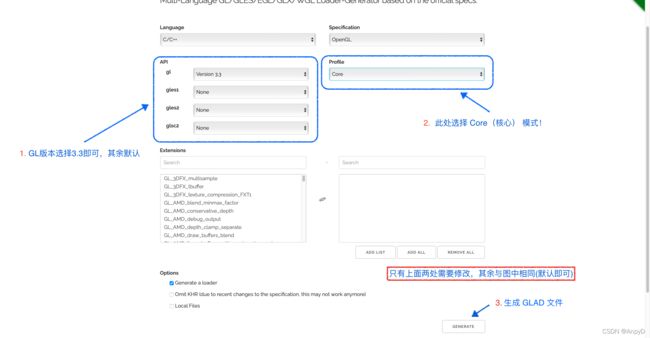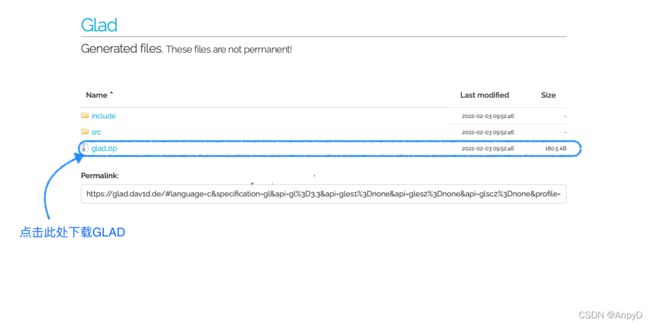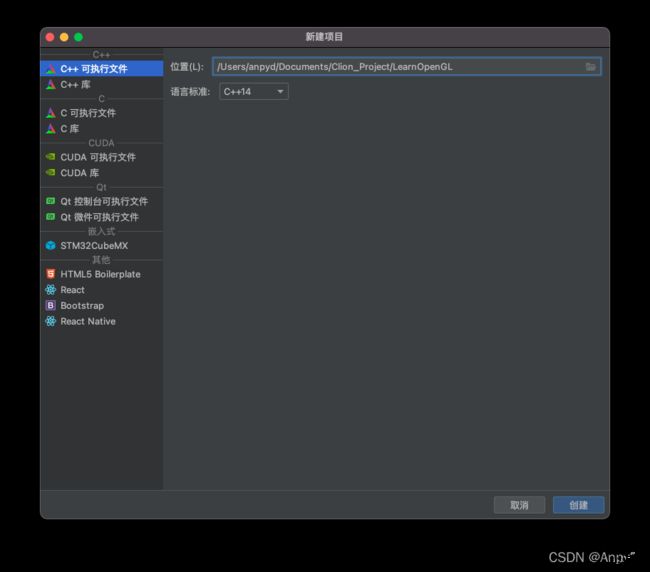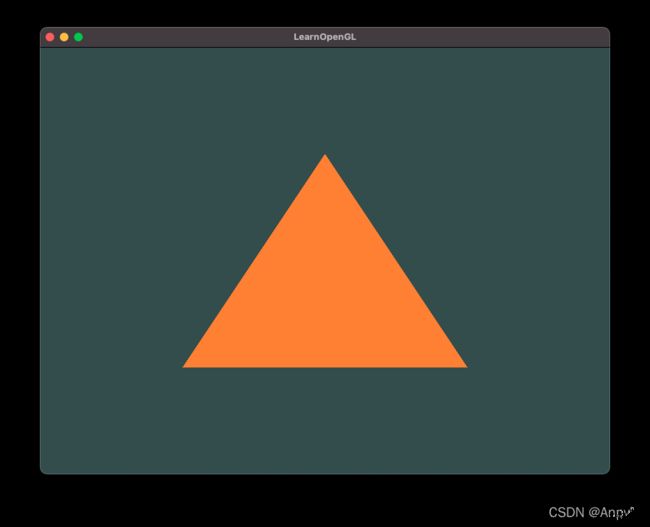macOS CLion 上搭建 GLFW + GLAD OpenGL开发环境
macOS CLion 上搭建 GLFW + GLAD OpenGL开发环境
1. 构建并安装GLFW
# 切换至下载解压后的GLFW源码目录
cd glfw-3.3.6
# 创建 build 文件夹,用于存放配置和编译后的文件
mkdir build
# 切换至 build 目录
cd build
# 用 cmake 生成相关构建文件(请确保你的 Mac 已经安装了 CommandLineTool 和 CMake)
# 如果安装 CMake 后执行下方命令后依旧出现 “zsh: command not found: cmake” ,请先执行下面这条命令后重试
# sudo "/Applications/CMake.app/Contents/bin/cmake-gui" --install
cmake ..
# 构建并安装GLFW
make && sudo make install
2. 下载GLAD
3. 配置 CLion 项目
- 添加GLAD相关文件
# 1.在项目根目录下创建 include 文件夹
# 2.将下载下来的 GLAD源码 中的 include/KHR 和 include/glad 文件夹拷贝进项目中的 include 文件夹
# 3.将 GLAD源码 中的 src/glad.c 拷贝进项目根目录下(与 main.cpp 处于同一目录下!!!)
- 配置项目 CMakeList.txt
# 配置 CMake 版本(一般CLion会在创建项目时自动配置此选项,这里可以无需和笔者一致,默认即可)
cmake_minimum_required(VERSION 3.19)
# 生成项目(默认即可)
project(LearnOpenGL)
# 配置C++版本(默认即可)
set(CMAKE_CXX_STANDARD 14)
# 头文件路径配置
include_directories(./include) # 这里的路径指向项目目录下的 include 文件夹
include_directories(/usr/local/include) # 此处的路径指向的是系统安装GLFW头文件的位置,通常为通过 make install 安装的头文件为此路径
# 设置库文件所在目录
link_directories(/usr/local/lib) # 安装GLFW时默认安装库文件位置
# 链接编译需要的系统框架
link_libraries("-framework Cocoa -framework OpenGL -framework IOKit -framework CoreVideo")
# 添加源文件(这里的 main.cpp 是你的C++源码文件)
add_executable(LearnOpenGL glad.c main.cpp) # glad.c 一定要填进去!
# 链接 GLFW 库
target_link_libraries(LearnOpenGL glfw3)
4.测试环境
这里测试 LearnOpenGL 的三角形 Example
#include 最后
至此,macOS CLion GLFW + GLAD 的 OpenGL 环境配置完毕!
参考
LearnOpenGL CN





